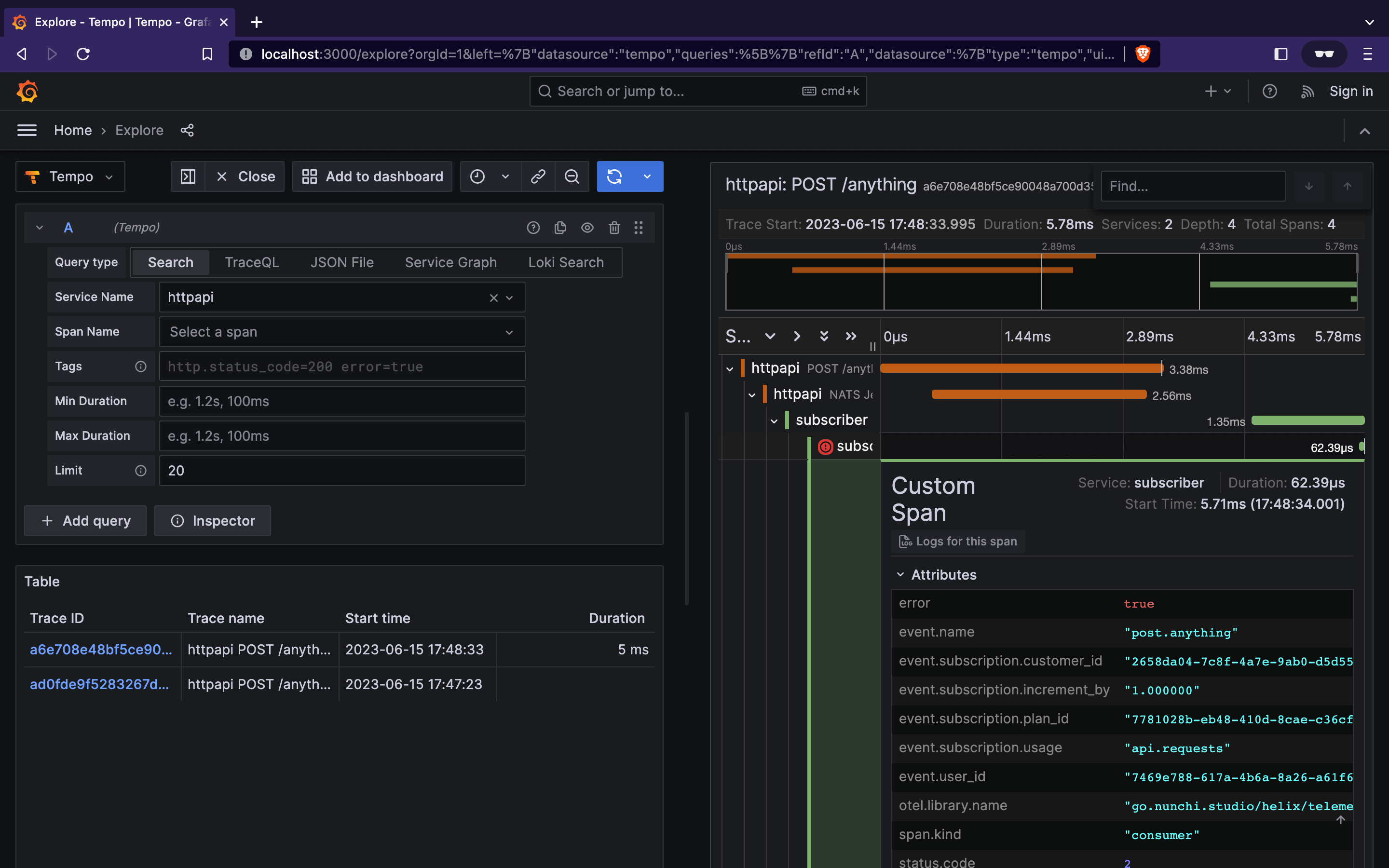helix is a framework for building cloud-native, consistent, reliable, and high-performance (micro) services. It allows back-end engineers to simplify development of complex problems through a thin layer of abstraction that handles automatic logging, tracing, observability, and event propagation across services and integrations.
helix acts as a package you can import in your code. Implementations:
- Go: for building micro-services with all the benefits listed above.
- TypeScript: for consuming public types on the front-end exposed by micro-services.
helix was developed with the following use cases in mind:
- Engineers must be able to write and maintain cloud-native, consistent, reliable, and high-performance (micro) services with no hassle.
- Engineers must have the power to transparently leverage end-to-end observability and event propagation across services and integrations.
- Engineering and product teams must be able to understand the user journey, fix customer issues, and improve user/platform/product experience together via end-to-end observability.
- Engineers must focus on the business logic. Technical challenges such as consistency and observability must live outside the business logic of the services.
helix provides an opinionated way to develop (micro) services. At its core, it relies on specifications and concepts such as OpenTelemetry and event propagation across services and integrations.
- Automatic distributed tracing and error recording: All integrations implement distributed tracing and error recording automatically, following OpenTelemetry standards. Which means developers can leverage integrations' capabilities as they are used to, except that all those functions transparently leverage traces and error recording with no additional efforts on the application side.
- Consistent event propagation: At its core, helix exposes an "Event" object. This object is automatically passed from service to service via distributed tracing, allowing to have observability of an event from end-to-end with no effort.
- Consistent error handling: Error handling and recording share the same schemas and behaviours across helix core and all integrations for strong consistency in the whole system.
- OpenAPI & AsyncAPI support: When it makes sense, OpenAPI and AsyncAPI specifications can optionally be leveraged for data validation. This can happen in the REST router for request/response validation against an OpenAPI description, or in other integrations for message validation against an AsyncAPI description.
To understand why helix is designed this way, it's important to understand the following goals in mind:
- The solution must be deployable anywhere and everywhere.
- The solution must be easy to configure and operate.
- The solution could exist in any and every language.
- The solution must allow smooth onboarding and no lock-in.
- The solution must provide a transparent layer of abstraction for end-to-end observability.
- The solution must be as light as possible, while still supporting out of the
box capabilities via integrations.
- Integrations capabilities must not overlap with one another.
- Integrations must be as consistent as possible across languages.
- Integrations internal lifecycle must not be exposed to end-users.
- Configuration across integrations must be as easy and consistent as possible.
- Custom integrations must be possible in case built-in ones don't fit the requirements of a company.
Repository licensed under the MIT License.


